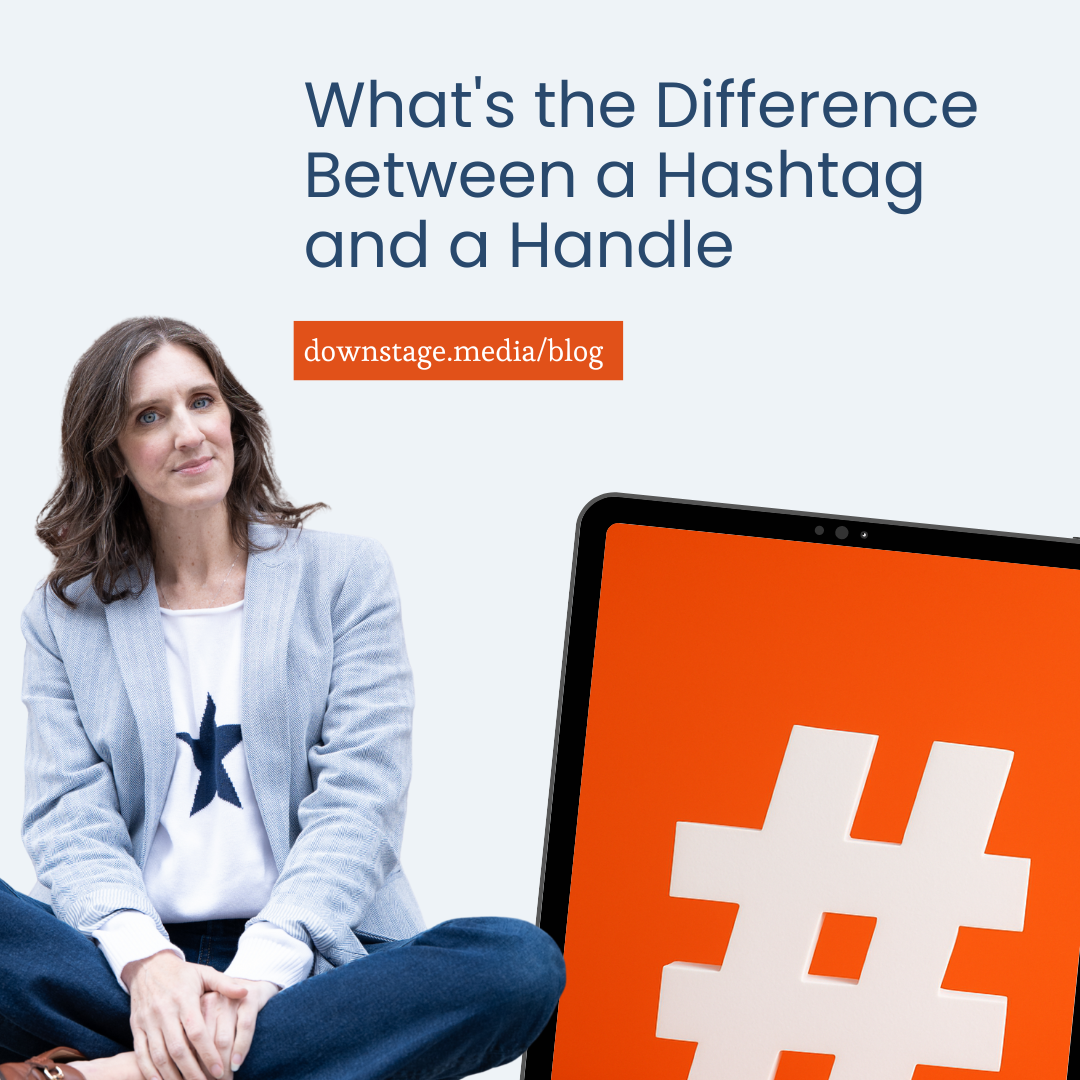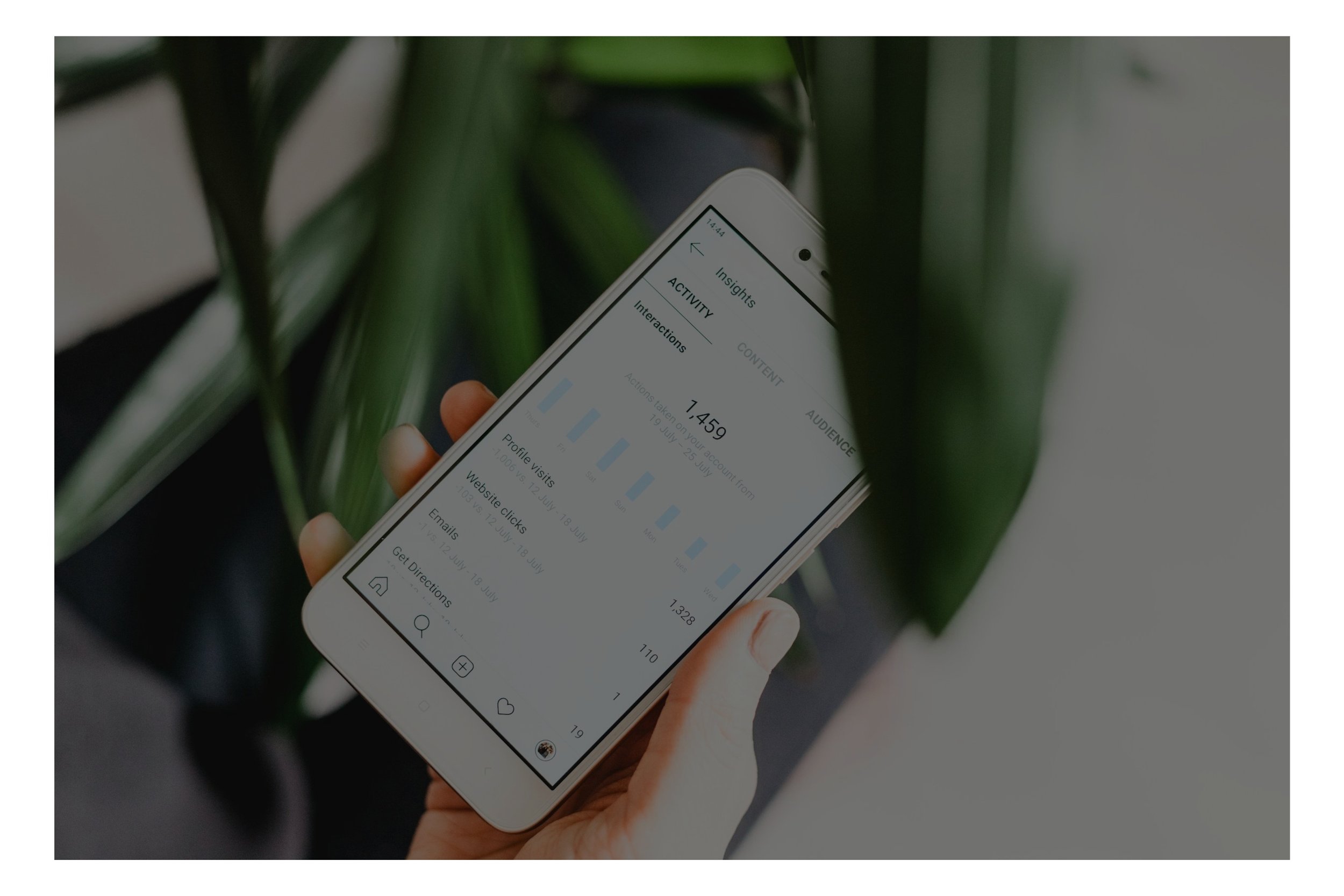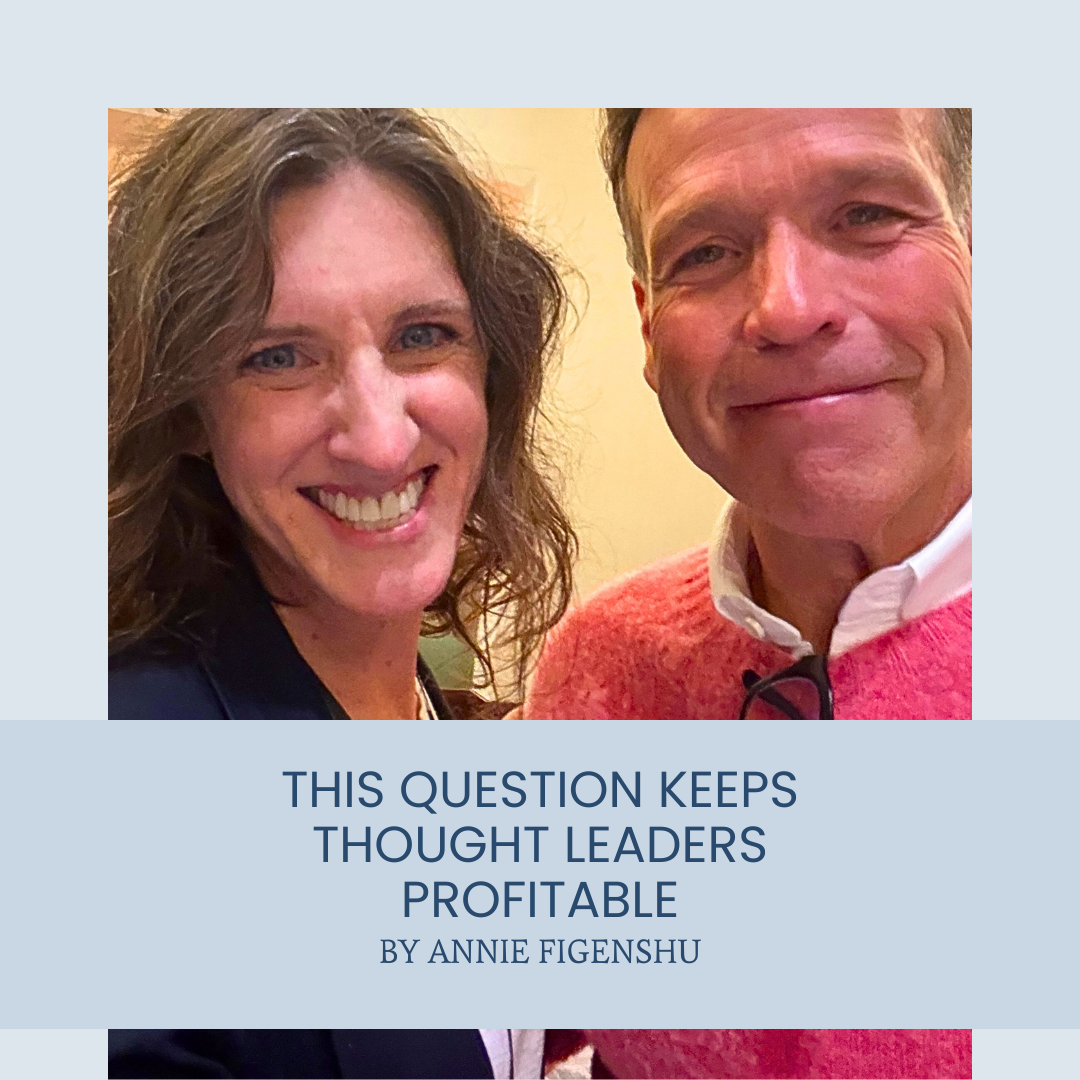What's the Difference Between a Hashtag and a Handle
Updated on December 2, 2025Let’s face it—navigating social media can feel like you’re trying to decode a secret language. Every platform has its own lingo, and just when you think you’ve got it down, something changes—like Twitter rebranding to X. Seriously, who saw that coming? But here’s the thing: understanding the difference between a hashtag and a handle isn’t just for social media geeks. It’s crucial for anyone who wants to make the most of their online presence.
Understanding the difference between a hashtag and a handle helps you show up clearly and confidently across every platform.
So, let’s break it down. In this post, we’re going to clear up the confusion, make sure you’re up to speed on the latest lingo, and show you how to use hashtags and handles to boost your social media game. Ready? Let’s dive in.
I've worked with a few different clients in the past month alone who were not clear on what a hashtag is and they were throwing it around incorrectly and causing confusion - mostly for themselves. So here's a very basic explanation of what a hashtag is, what a handle is, and how you use them.
What is a Hashtag and How Does it Work?
What is a Handle and Why is it Important?
What’s the Difference Between a Hashtag and a Handle?
How Should You Adapt to Platform Changes?
Wrapping It Up: Hashtags, Handles, and Staying Ahead
What is a Hashtag and How Does it Work?
What is a Hashtag
If you've spent any time on social media, you've undoubtedly come across hashtags—those little words or phrases preceded by a pound sign (#). But what exactly is a hashtag, and why do they matter so much in the digital world?
Brief History of Hashtags:
The hashtag was born in 2007 on Twitter (now X) when a user suggested using the pound sign (#) to group related tweets together. The idea caught on quickly, and before long, hashtags became a central feature of the platform. From there, hashtags spread like wildfire across other social media platforms, including Instagram, Facebook, LinkedIn, and more. Today, they’re used not only for categorizing content but also for starting movements, running campaigns, and connecting people around the world with shared interests.
How Hashtags Work:
At their core, hashtags act as a way to categorize content on social media platforms. When you add a hashtag to a post, it becomes part of a larger conversation on that topic. For example, if you post a photo on Instagram and include #SmallBusiness in your caption, your post will be discoverable by anyone searching for that hashtag. This makes hashtags a powerful tool for increasing the visibility of your content and reaching a broader audience.
If your content isn’t performing, it may not be a hashtag issue at all. It may be that your message isn’t clear. You can learn how to clarify your message here.
Examples of Popular Hashtags:
Annie Figenshu with her bookSimple Social Media.
Different platforms have their own hashtag cultures, and certain hashtags tend to be popular across the board. For example:
#ThrowbackThursday (#TBT): A popular hashtag on Instagram, where users share nostalgic photos from the past.
#SmallBusiness: Commonly used on platforms like X, Instagram, and LinkedIn to promote and support small businesses.
#MotivationMonday: Frequently used to kickstart the week with positive and motivational content.
What Are the Best Practices for Using Hashtags?
Now that you understand what hashtags are and how they work, let’s dive into some best practices for using them effectively.
How to Choose the Right Hashtags:
Selecting the right hashtags is crucial for maximizing the reach of your posts. Start by researching what’s trending in your niche or industry. Tools like Instagram’s Explore page or Twitter’s trending section can provide insights into popular hashtags. However, don’t just go for the most popular ones—focus on hashtags that are relevant to your content and audience. Niche hashtags, though less popular, can often lead to higher engagement because they attract a more targeted audience.
A good rule is to mix broader hashtags with a handful of niche, specific ones to reach both wide and highly targeted audiences.
A simple content system blends strategy, consistency, and a clear point of view so your audience immediately understands who you are and why you matter.
Choosing the right hashtags is just one piece of the puzzle. For more tips on optimizing your social media efforts, check out my book Simple Social Media—a go-to guide for small teams looking to save time while maximizing results.
How Many Hashtags Should You Use?
The optimal number of hashtags varies by platform. On X, it’s recommended to use 2-3 hashtags per post to avoid clutter and maintain readability. Instagram, on the other hand, allows for up to 30 hashtags, and while you don’t need to use all 30, a higher number of relevant hashtags can help increase your content’s discoverability. Experiment with different numbers to see what works best for your audience.
If increasing your reach is a priority, this post on why your company should blog explains how long-form content supports search, visibility, and social engagement.
What Mistakes Should You Avoid When Using Hashtags?
While hashtags are powerful, they can backfire if not used correctly. Here are some common pitfalls to avoid:
Overusing Hashtags: On platforms like X, using too many hashtags can make your post look spammy and reduce engagement. Stick to a few well-chosen hashtags.
Using Irrelevant Hashtags: Don’t use popular hashtags just because they’re trending if they don’t relate to your content. This can confuse your audience and damage your credibility.
Banned Hashtags: Some hashtags are banned or restricted on platforms like Instagram, often because they’ve been associated with inappropriate content. Always check the status of a hashtag before using it.
Avoiding these pitfalls is crucial, but even the best strategies can benefit from expert guidance. Join our Small Group Marketing Cohort, where you can collaborate with others and get personalized advice on your social media strategy.
What is a Handle and Why is it Important?
What is a Handle
So, you’ve probably seen handles all over social media, but what exactly are they? A handle is essentially your unique identifier on a platform. It’s like your online nickname, but way more important because it’s how people find you, tag you, and interact with your content.
Platform-Specific Examples
Handles look a bit different depending on the platform:
X (formerly Twitter): Your handle is what comes after the @ symbol, like @YourNameHere. It’s how people tag you in tweets and conversations.
Instagram: Same deal as X—it’s your @username, and it’s how people mention you in posts, comments, and stories.
LinkedIn: LinkedIn handles aren’t as prominent, but your profile URL can serve a similar function. You can customize your LinkedIn URL to make it easy to share.
Whether you’re on X, Instagram, or LinkedIn, your handle is your social media identity. It’s how people recognize you, so it needs to be on point.
How Do You Choose and Use Handles Effectively?
Now that you know what a handle is, let’s talk about how to choose one that really works for you.
How to Choose an Effective Handle
Your handle should reflect your brand and be easy to remember. Ideally, it’s something that’s consistent across all your social media platforms. If you’re a business, it should include your brand name, and if you’re a public figure, your name or a variation of it works best. Keep it short, sweet, and to the point—no one wants to type out a novel just to tag you.
Want to streamline your brand across all platforms? Our Simple Social Media Resources include a Brand Playbook Template to help you lock down your handles and create a consistent online presence.
How Should You Use Handles in Communication?
Your handle isn’t just for show—it’s a key part of how you communicate on social media. Tagging others in posts, responding to comments, and promoting your handle on your marketing materials (think business cards, email signatures, and websites) are all great ways to get your name out there.
When you tag others using their handle, it’s like giving them a shoutout. It gets their attention and can help build relationships. Plus, when you encourage others to tag you, it increases your visibility to their audience. It’s a win-win.
If managing your social media handles and interactions feels like a lot, check out my book Simple Social Media. It’s packed with tips and tricks for small teams looking to save time while maximizing their impact online.
What Are Common Mistakes to Avoid with Handles?
Even something as simple as a handle can trip you up if you’re not careful. Here are a few pitfalls to watch out for:
Changing Handles Frequently: Consistency is key. If you’re constantly changing your handle, your audience might struggle to find you. Plus, you’ll have to update all your marketing materials, which is a hassle.
Choosing a Handle That’s Too Long or Confusing: Keep it simple. Handles that are too long or hard to spell can be easily mistyped, leading potential followers or customers to a dead end.
Not Claiming Your Handle Across Platforms: Even if you’re not active on a platform, it’s a good idea to claim your handle so no one else can. This ensures brand consistency if you decide to expand your social media presence later on.
Need help with all things social media? Our Simple Social Media webinar is designed to help small teams save time while effectively managing their online presence. Sign up now and get your handles, hashtags, and everything else in perfect order.
What is the Difference Between a Hastag and a Handle?
How Do Hashtags and Handles Differ in Purpose and Functionality?
Alright, now that we’ve broken down hashtags and handles individually, let’s talk about how they differ in both purpose and functionality.
Hashtags vs. Handles
While hashtags and handles might look similar (they both start with a symbol—# or @), they serve completely different purposes on social media.
The Key Difference Between a Hashtag and a Handle
Hashtags are all about categorization. When you use a hashtag, you’re essentially filing your content into a specific folder where anyone interested in that topic can find it. Think of hashtags as the filing system for social media—making it easy for people to discover content that’s relevant to them, even if they don’t follow you.
Handles, on the other hand, are all about identity. This difference matters because one helps people discover your content, while the other helps people interact with you directly.Your handle is your unique identifier on a platform. It’s how people find you, tag you, and interact with you directly. Handles are like your social media phone number—specific to you and only you.
What Are the Visual and Functional Distinctions?
Visually, hashtags are preceded by the pound sign (#) and are usually a word or phrase without spaces, like #MarketingTips or #SmallBusiness. Handles are preceded by the @ symbol and typically include a username or brand name, like @DownstageMedia.
Functionally, the differences are even more distinct:
Hashtags group content together. If you post using the hashtag #SocialMediaTips, your post joins a larger conversation with others using the same hashtag. It’s great for discovery and joining wider discussions.
Handles are for tagging and direct interaction. When someone tags you with your handle (@YourNameHere), you get a notification, and it’s a direct way to interact with others. Handles are unique to each user, meaning no two people or brands can have the same one on the same platform.
When Should You Use a Hashtag vs. a Handle?
Now that we’ve got the basics down, let’s dive into when to use each one effectively.
When to Use a Hashtag vs. a Handle:
Use a Hashtag when you want to join or start a conversation on a broader topic. Hashtags are perfect for increasing the visibility of your posts, participating in trending discussions, or categorizing your content. For example, if you’re posting a tip about social media marketing, adding hashtags like #SocialMediaMarketing or #MarketingStrategy can help your post get seen by a wider audience.
Use a Handle when you want to directly interact with someone or highlight a specific user or brand. Handles are essential when you’re mentioning someone in your post, responding to comments, or giving shoutouts. For example, if you’re referencing a strategy you learned from Downstage Media, tagging us with @DownstageMedia ensures we see it and can engage with you.
Looking to streamline how you use hashtags and handles in your social media strategy? Our Simple Social Media webinar offers actionable tips and best practices to help you maximize your social media efforts. Register now to learn how to make the most out of every post.
How Do Brands Effectively Use Hashtags and Handles?
Successful brands know how to balance the use of hashtags and handles to maximize their social media impact. Here are a few examples:
On X (formerly Twitter): Brands often use hashtags to participate in trending topics or run campaigns (#BlackFridayDeals), while handles are used to engage with customers directly (@YourCompany).
On Instagram: Brands might use a mix of popular and niche hashtags to increase post visibility (#InstaBusiness, #ShopLocal) and use handles to tag collaborators, influencers, or customers who are featured in their content.
On LinkedIn: Hashtags help categorize content for professionals looking for industry-specific information (#ContentMarketing), while handles are crucial for networking and directly mentioning people in posts and comments.
If you want your social media presence to feel consistent rather than chaotic, this guide to building a simple content system breaks the process down step by step.
How Should You Adapt to Platform Changes (e.g., Twitter to X)?
How Do You Navigate Changes in Social Media?
If there’s one thing you can count on in social media, it’s change. Platforms evolve, trends shift, and what worked yesterday might not work tomorrow. A prime example? Twitter’s recent rebranding to X. Suddenly, the platform you’ve been using for years looks different, feels different, and might even have different rules when it comes to using hashtags and handles.
The Impact of Rebranding from Twitter to X
When Twitter rebranded to X, it wasn’t just a logo change—it signaled a shift in the platform’s identity and functionality. For users, this means that the way hashtags and handles function could evolve as well. As the platform continues to develop under its new brand, staying adaptable and informed will be key to maintaining your social media effectiveness. For example, when Instagram introduced Reels, hashtags behaved differently in the feed for several months while the algorithm shifted, and users who adapted early saw significantly more reach.
So, what does this mean for you? It means that while you should continue to use hashtags and handles, you should also keep an eye on how their usage might shift over time. This might involve new best practices for tagging, changes in the visibility of certain hashtags, or even the introduction of new features that could affect your strategy.
To help you stay on top of these changes, our Simple Social Media Resources are a must-have. They include tools and templates to help you quickly adjust your strategy as platforms evolve.
What Tips Can Help You Stay Updated?
In a world where platforms can rebrand overnight, staying updated is non-negotiable. Here are a few tips to help you keep your finger on the pulse of social media changes:
Follow Industry Experts: Keep tabs on social media thought leaders, including platform executives and marketing experts. They often share insights and updates that can help you stay ahead of the curve.
Subscribe to Newsletters and Blogs: Sign up for newsletters or follow blogs that focus on social media trends. Sites like Social Media Examiner or HubSpot regularly publish content on the latest platform updates.
Engage with Communities: Join online communities or groups on platforms like LinkedIn or Facebook where marketers and social media managers discuss industry changes. This can be a great way to learn from others and share your own experiences.
Want to get proactive about staying updated? Our Small Group Marketing Cohort is the perfect place to discuss these changes in real-time with fellow marketers and get advice on how to adapt your strategy. Enroll now and be part of a community that’s always in the know.
How Can You Future-Proof Your Social Media Strategy?
Adaptability is your best friend when it comes to social media. Here’s how to future-proof your strategy so you can roll with the punches, no matter what changes come your way:
Stay Flexible: Don’t get too attached to a single platform or strategy. Be open to experimenting with new features, trying out different content formats, and shifting your focus if needed. The social media landscape is always evolving, and your strategy should be too.
Diversify Your Presence: Avoid putting all your eggs in one basket. Spread your social media efforts across multiple platforms to reduce the impact of changes on any single one. This way, if a platform rebrands or its functionality changes, you’ll still have a strong presence elsewhere.
Use Monitoring Tools: Leverage tools like Hootsuite, Sprout Social, or Google Alerts to track mentions of your brand and monitor changes in social media platforms. These tools can help you identify trends early and adjust your strategy accordingly.
Keep Learning: Social media is constantly changing, and so should your knowledge. Attend webinars, take online courses, and read up on the latest trends to ensure your strategy remains effective.
Want to make sure your strategy is as future-proof as possible? Consider our Simple Social Media Marketing service. We handle your social media entirely, staying updated with every platform change so you can focus on what you do best.
Wrapping It Up: Hashtags, Handles, and Staying Ahead
So now you know the scoop. Hashtags and handles aren’t just social media jargon. They’re strategic tools that help people find you and understand who you are. When you use both intentionally, your content becomes clearer, more discoverable, and easier for audiences to engage with.
But here’s the thing:
Hashtags and handles only work when they sit inside a simple, repeatable content system. Most teams struggle not because they’re using the wrong tags, but because they’re trying to post without a strategy that supports their bigger goals.
If you want your content to feel consistent, strategic, and sustainable, I can help.
The first step is a conversation.
Ready for a clearer, more effective social presence?
Let’s talk about what you’re doing now and where your visibility can grow.













